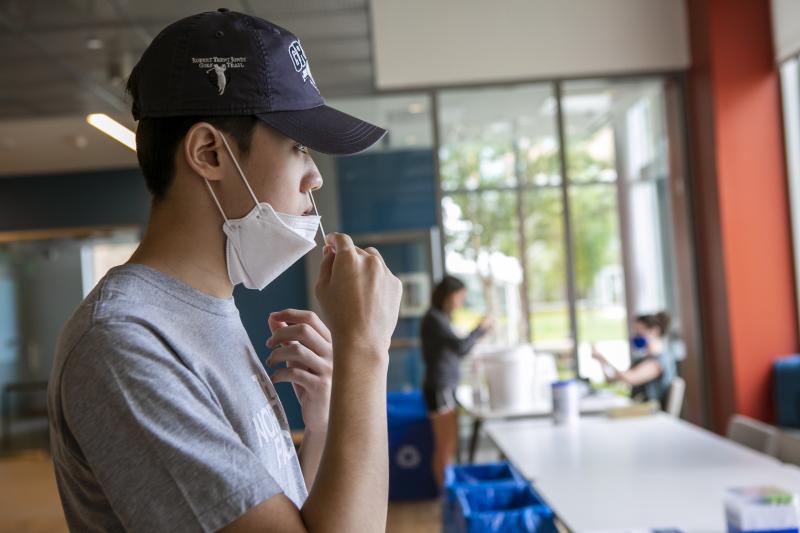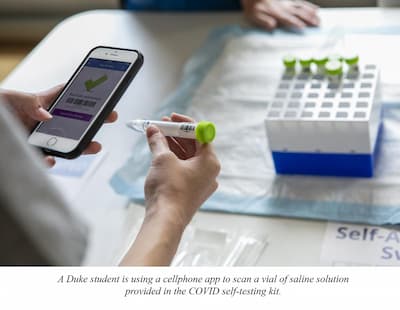
Duke University’s Aggressive COVID Testing and Surveillance Minimized Infections
Infection prevalence among students was lower than in the surrounding community
DURHAM, N.C. – An aggressive COVID-19 surveillance and testing effort at Duke University was highly effective in minimizing the spread of the disease among students on campus, according to a case study appearing Monday in the CDC’s Morbidity and Mortality Weekly Report.
The successful Duke campaign was launched before the start of the semester. Ahead of arriving on campus, all enrolled students were required to self-quarantine for 14 days, sign a code of conduct pledge to obey mask-wearing and social distancing guidelines and have a COVID test.

Once classes started, the university conducted regular surveillance testing using pooled samples to conserve resources, daily symptom self-monitoring, contact tracing with quarantine, and regular testing for those who were symptomatic or had been exposed to someone with COVID-19.
The result: The average per-capita infection prevalence among students was lower than in the surrounding community, and large outbreaks seen on other campuses were avoided. Overall, combined testing approaches identified 84 cases among students, with 51% occurring among asymptomatic people.
“Our experience at Duke shows that combined risk reduction strategies and surveillance testing can significantly lower transmissions on college campuses and beyond,” said lead author Thomas Denny, professor of medicine at Duke University School of Medicine and chief operating office at the Duke Human Vaccine Institute.
Denny said the Duke experience relied on a combination of strategies. In addition to the testing and quarantining before students arrived on campus, the measures included:
- Creating a smartphone app for daily symptom self-monitoring and reporting;
- Having students living on campus conduct twice-weekly tests themselves, using kits with prelabeled tubs, swabs and specimen bags; off-campus students tested at least once a week;
- Strategically locating sites across campus to collect testing samples from students;
- Batching samples in a process called pooled testing, with five samples grouped and analyzed for the presence of the virus. Batches that registered positives were then broken into individual samples and tested separately to identify the source of the positive. The Duke Human Vaccine Institute processed 80,000 samples from August-October.
“By late summer there were still things we didn’t fully understand about SARS-CoV-2 transmission, so there was some uncertainty going into the fall semester,” said Steve Haase, associate professor in Duke’s departments of Biology and Medicine. “Over the course of the semester we’ve learned many things, including that it is possible to limit the spread of the virus and create a safer environment for our students to have that invaluable on-campus learning experience.”
“Thanks to the collaboration of literally hundreds of dedicated individuals, along with the high level of engagement by our students, we have had a very positive fall,” said co-author Kyle Cavanaugh, vice president of Administration at Duke University. “Our dynamic surveillance testing strategy has served as a key component of our experience that has also included very high compliance with masking, social distancing and other key public health behaviors.”
In addition to Denny, Haase and Cavanaugh, study authors include Laura Andrews, Mattia Bonsignori, Michael B. Datto, Anastasia Deckard, C. Todd Demarco, Nicole DeNaeyer, Carol A. Epling, Thaddeus Gurley, Chloe Hallberg, John Harer, PhD, Charles L. Kneifel, Mark J. Lee, Raul Louzao, M. Anthony Moody; Zack Moore, Christopher R. Polage, Jamie Puglin, P. Hunter Spotts, John A. Vaughn and Cameron R. Wolfe.
via Duke Health News